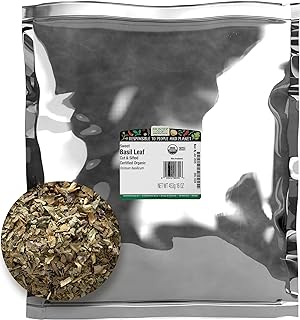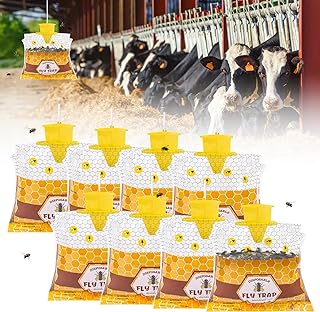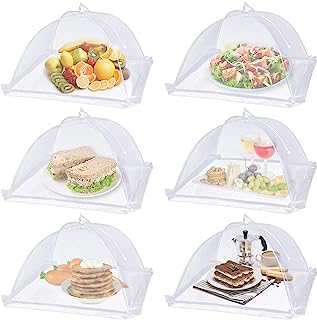Did you know that flies can carry over 100 pathogens harmful to humans? Keeping flies away from your outdoor patio is crucial for a safe and enjoyable space. By implementing effective strategies, you can create a fly-free zone and enhance your outdoor experience. From natural repellents to strategic landscaping, there are various methods to keep pesky flies at bay and ensure a pleasant environment for you and your guests.
Key Takeaways
Implement a combination of methods for effective fly control, such as using repellents, maintaining your yard, and setting up traps.
Try the Penny Water Trick by hanging a clear plastic bag filled with water and shiny pennies to deter flies from your patio.
Utilize fly-repellent plants like basil, lavender, and mint around your outdoor space to naturally keep flies at bay.
Enhance your patio with fans and citronella candles to create airflow and repel flies with the scent.
Regularly maintain your yard by removing standing water, keeping trash sealed, and cleaning up pet waste to reduce fly breeding grounds.
Experiment with setting up fly traps like jar traps or sticky tape near your patio to capture flies and reduce their numbers effectively.
Understanding Fly Repellents
Types of Repellents
Fly repellents come in various forms, including sprays, candles, and plants like basil and mint. These products work by emitting scents that flies find repulsive.
e repellents contain DEET, a chemical effective against flies but may have harmful effects on humans. On the other hand, essential oils are natural alternatives that effectively deter flies without posing risks to health.
Importance of Natural Methods
Using natural fly repellents is crucial as it minimizes exposure to harmful chemicals. Natural methods not only keep flies at bay but also ensure a safe environment for pets and children.
Unlike chemical-based repellents, natural options like citronella candles or lavender sachets offer effective protection without compromising on safety.
Effectiveness of Techniques
When it comes to repelling flies, certain techniques are more effective than others. Fly screens installed on windows and doors act as physical barriers, preventing flies from entering the house.
Another effective technique is utilizing fly traps, which attract flies using bait and then trap them inside the device. This method helps reduce the fly population without the need for harmful chemicals.
The Penny Water Trick
Placement Strategy
Strategically place glasses of water with pennies around your patio to effectively repel flies. The trick lies in the way light reflects off the water and pennies, creating an illusion that discourages flies from hovering around.
The penny water trick involves setting up glasses filled with water and dropping a few old pennies into each glass. To maximize its effectiveness, position these glasses strategically across your outdoor patio. As the sunlight hits the water and pennies, it creates a reflection that confuses and deters flies from approaching.
Utilizing Older Pennies
When implementing the penny water trick to keep flies away from your patio, opt for older pennies for better results. The oxidized copper on older pennies enhances the reflective properties, intensifying the light’s effect on deterring flies.
Pros:
Cost-effective method
Environmentally friendly approach
Cons:
Effectiveness can vary based on environmental factors
Incorporating this simple yet effective technique not only helps in fly control but also adds a touch of visual interest to your outdoor space. By leveraging the reflective power of water and old pennies, you can enjoy a fly-free patio environment without relying on chemical repellents.
Bag of Water Method
Hang Bags
Hang bags filled with water and pennies to deter flies. The way light refracts through the water creates a visual distortion that repels flies.
Optimize fly repellent by using multiple bags strategically. Place them around your patio to create an effective barrier against pesky insects.
Alternative Approach
Consider an alternative method to the penny water trick for fly control. Some people use essential oils like citronella or lavender in water-filled bags to repel flies.
Yard Maintenance Tips
Cleanliness
Maintaining a clean outdoor area is crucial in keeping flies away from your patio. Regularly clear away any food debris, spills, or standing water that may attract flies. Dispose of garbage promptly and ensure trash cans have tight-fitting lids to prevent fly access.
Vegetation Trimming
Trimming vegetation around your patio is essential to reduce fly-attracting areas. Overgrown plants can provide hiding spots and breeding grounds for flies. By keeping vegetation well-maintained and trimmed, you can minimize these attractive spots for flies.
Waste Management
Implementing proper waste management practices is key to preventing fly infestations in your outdoor space. Ensure all garbage is disposed of in sealed bags and bins. Regularly clean out compost bins and pet waste areas to eliminate potential fly breeding sites.
Fly-Repellent Plants
Sweet Basil
Sweet Basil, known for its culinary uses, also acts as a natural fly repellent when strategically placed in the patio area. The strong aroma of basil helps deter flies from buzzing around, making it a valuable addition to your outdoor space.
Planting Sweet Basil near entry points or dining areas can significantly reduce the presence of flies, creating a more enjoyable environment for outdoor activities. This herb is easy to grow and maintain, making it a practical and effective solution for fly control on your patio.
Lavender
Lavender, with its beautiful purple blooms and calming fragrance, serves as an excellent natural fly repellent for outdoor spaces. The distinct scent of lavender is pleasing to humans but repels flies effectively, keeping them at bay from your patio area.
By incorporating Lavender plants in pots or garden beds around the patio, you not only add aesthetic appeal but also create a fragrant barrier against flies. Enjoy the benefits of a fly-free outdoor experience while enhancing the ambiance with the lovely scent of lavender.
Rosemary, Mint, and Wormwood
Rosemary, Mint, and Wormwood are additional herbs that offer potent fly-repellent properties, ideal for maintaining a pest-free patio environment. These herbs release strong scents that flies find unpleasant, deterring them from lingering in the area.
Strategic placement of Rosemary, Mint, and Wormwood plants in different corners of the patio creates a green barrier that effectively keeps flies away. Embrace the dual benefits of natural pest control and aromatic enhancement by incorporating these versatile herbs into your outdoor space.
Benefits of Using Fly-Repellent Plants
Natural and chemical-free solution
Adds aesthetic appeal to the patio area
Enhances the ambiance with pleasant fragrances
Easy to grow and maintain
Using Fans and Citronella
Battery-Operated Fans
Battery-operated fly-repelling fans are a practical solution for keeping flies away from your outdoor patio. These fans work by emitting a gentle breeze that deters flies from landing on surfaces or food. By installing these fans strategically around your patio, you can create a fly-free zone for more enjoyable outdoor gatherings.
Citronella Candles and Oils
Citronella candles and oils are known for their natural fly-repellent properties. The strong scent of citronella acts as a deterrent, keeping flies at bay without the use of harmful chemicals. Placing citronella candles on tables or using citronella oil in diffusers can significantly reduce the presence of flies in your outdoor space.
Comprehensive Fly Deterrence
For optimal results, consider combining the use of battery-operated fans with citronella candles or oils. This multi-pronged approach enhances fly control by targeting flies from different angles. While fans disrupt flies’ flight patterns, citronella creates an additional barrier that repels them effectively. By integrating these methods, you can create a robust defense system against pesky flies on your patio.
Setting Up Fly Traps
Strategic Placement
Place fly traps strategically around your patio to effectively capture pesky flies. Strategic placement involves identifying areas where flies tend to congregate the most.
Flies are attracted to areas with food, garbage, or standing water. Position fly traps near these locations to maximize their effectiveness.
DIY Options
Consider creating DIY fly traps using common household items like vinegar, sugar, and dish soap. These homemade traps can be just as effective as store-bought ones.
To create a simple DIY fly trap, mix apple cider vinegar with a few drops of dish soap in a container. The scent attracts flies, while the soap breaks the surface tension, causing them to drown.
Enhancing Effectiveness
Boost the effectiveness of your fly traps by placing them near fly-attracting areas such as outdoor trash cans or pet waste disposal areas. Flies are more likely to be lured into the traps if they are close to their food sources.
Regularly empty and clean the fly traps to maintain their efficiency. Emptying the traps prevents the buildup of dead flies, ensuring that new ones can still be captured.
You might be interested in this article as well:
Physical Barriers
Food Tents
Food tents are an effective physical barrier to keep flies away from outdoor patios. These mesh covers can be placed over dishes and meals to prevent flies from landing on food. The fine mesh material allows for ventilation while keeping pesky insects at bay.
Using food tents is a simple yet practical way to protect your outdoor meals from contamination. By covering food with these tents, you can enjoy your meals without the nuisance of flies buzzing around. Food tents are easy to set up and store, making them a convenient solution for outdoor dining.
Reflective CDs
Implementing old CDs with their reflective sides facing out can act as an additional deterrent for flies. The reflection of light off the CDs disorients flies and discourages them from hovering around the patio area. Hanging these CDs strategically around the patio can create a fly-free zone.
Reflective CDs serve as a cost-effective method to complement other fly-repelling techniques. The shimmering effect produced by the CDs confuses flies and disrupts their flight patterns, reducing their presence near outdoor dining spaces. This simple yet innovative approach adds an extra layer of protection against unwanted pests.
Combination Strategy
To establish a fly-free zone, consider combining physical barriers like food tents with other fly-repelling methods discussed in the previous section. By integrating various strategies such as setting up fly traps, using repellent plants, and employing reflective CDs, you can create a comprehensive defense against flies on your outdoor patio.
Implementing a combination strategy enhances the effectiveness of each individual method, providing a holistic approach to keeping flies away outside patios. By diversifying your tactics, you can tackle the issue of fly infestation from multiple angles, ensuring a more thorough protection for your outdoor dining experience.
Summary
You’ve learned various effective methods to keep flies away from your outdoor patio. From utilizing natural repellents like penny water and fly-repellent plants to setting up traps and physical barriers, you now have a toolkit to combat these pesky insects. By maintaining your yard and using fans or citronella, you can enjoy a fly-free outdoor space all season long.
Now it’s time to take action! Implement these strategies and create a pleasant environment on your patio. Experiment with different techniques to find what works best for you. Keep your outdoor space fly-free and make the most of your time outside. Enjoy the fresh air without the nuisance of flies buzzing around. Your peaceful patio oasis awaits!
Frequently Asked Questions
How do fly repellents work?
Fly repellents work by emitting odors or substances that flies find unpleasant, driving them away from the area. These repellents disrupt the flies’ senses and prevent them from landing or staying in the vicinity.
What is the Penny Water Trick for keeping flies away?
The Penny Water Trick involves hanging a clear plastic bag filled with water and shiny pennies near your patio. The reflection of light on the water and pennies confuses flies, deterring them from entering the area.
Which plants can be used as fly repellents in an outdoor patio setting?
Plants like lavender, basil, mint, marigold, and citronella are effective natural fly repellents due to their strong scents that flies dislike. Planting these around your patio can help keep flies at bay without the need for chemical repellents.
How can fans and citronella help in repelling flies outdoors?
Using fans to create airflow disrupts a fly’s ability to navigate effectively, making it difficult for them to land. Citronella candles or oil emit a strong scent that repels flies. Combining these methods can significantly reduce fly presence on your patio.
What are some physical barriers that can be set up to keep flies away from an outdoor patio?
Physical barriers like mesh screens, netting, or even umbrellas can act as effective shields against flies. These barriers block the entry of flies while still allowing air circulation, making your outdoor space less inviting to these pests.
You might be interested in these articles as well:
How to Sell Your House in 5 Days: Quick Tips & Creative Techniques
Mobile Home Replacement Program Essentials
Mobile Home Vin Number: Importance & Location Guide





